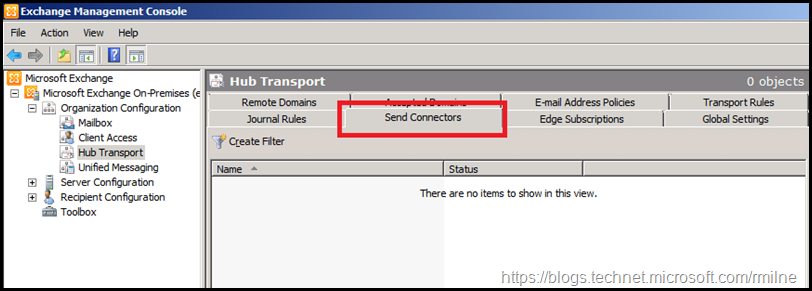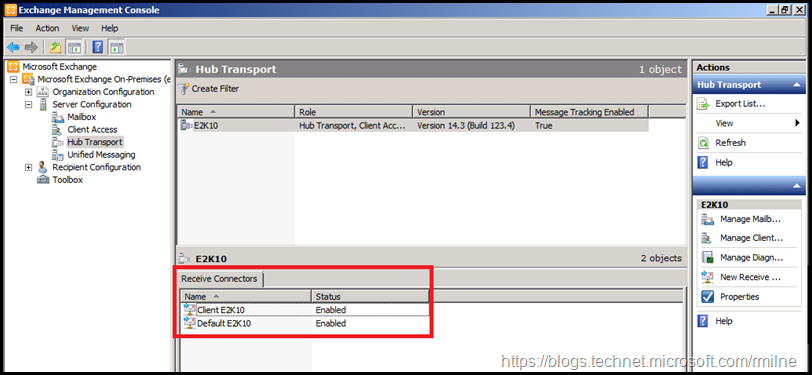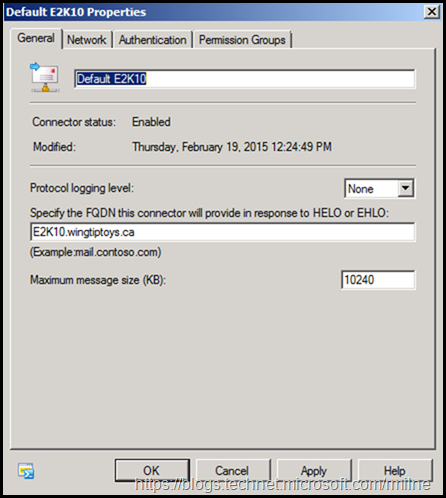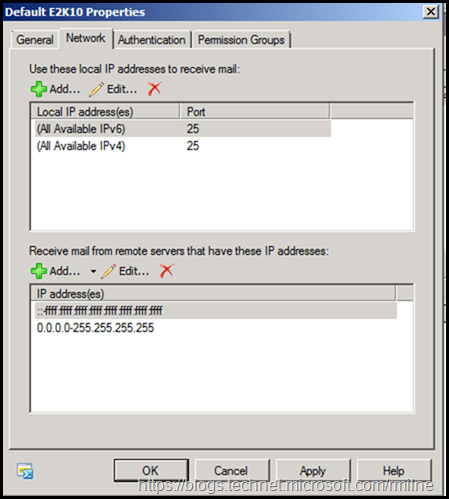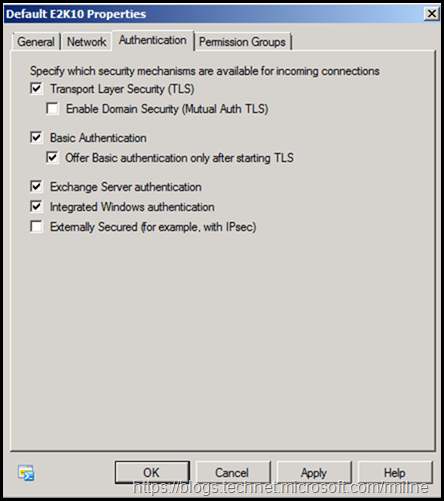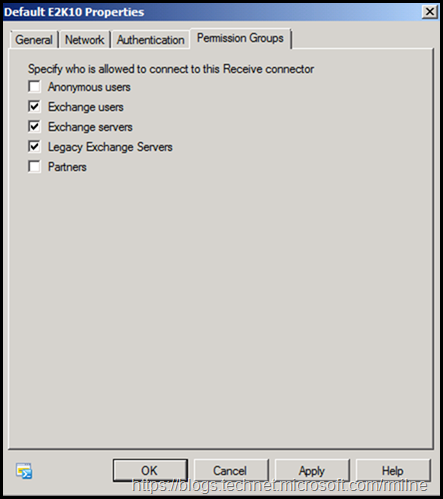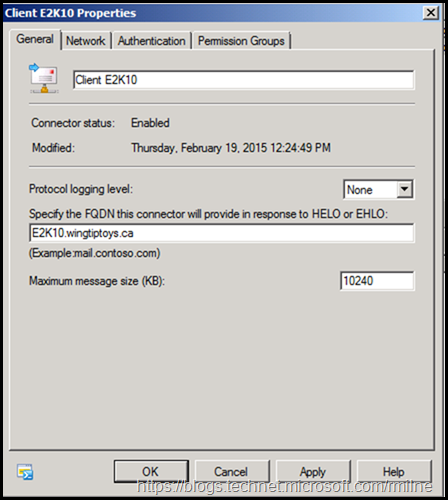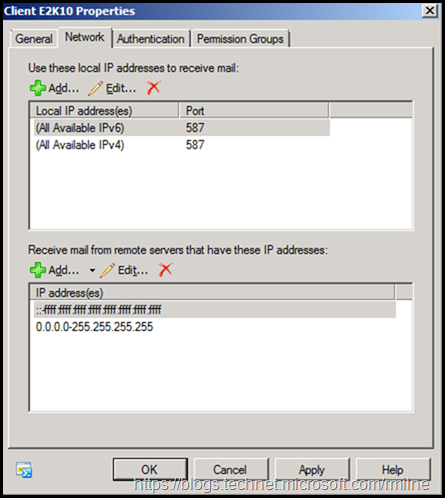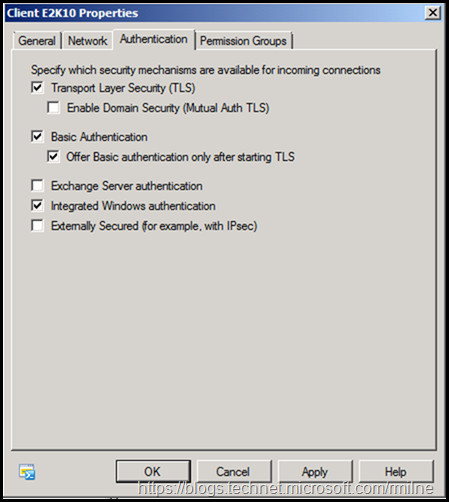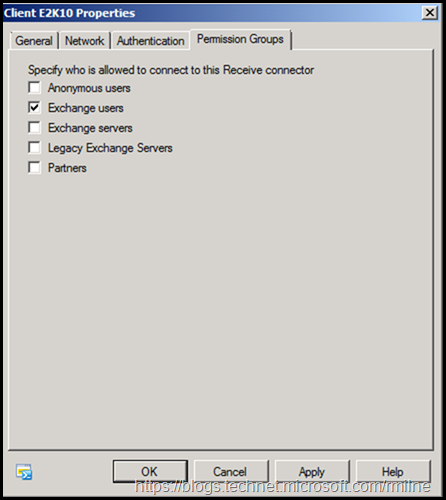This post is to provide a quick reference to the Exchange 2010 Hub Transport default send and receive connector configuration. There will be a separate one for Exchange 2013 and 2016.
When installing the Exchange 2010 Hub Transport role, two receive connectors are created on each server. They are called:
-
Client <ServerName>
-
Default <ServerName>
In the below example, the Exchange 2010 Hub Transport server is imaginatively called E2K10.
We could get the same information, and more, using PowerShell though the UI does allow the information to be displayed in a convenient manner. For reference the PowerShell is below should you want it:
Get-ReceiveConnector –Identity “E2K10Default E2K10”
Get-ReceiveConnector –Identity “E2K10Client E2K10”
Default Send Connector
Just like in the Matrix where there is no spoon, there is no default send connector to route mail to the Internet. This does not exist by default and must be manually created.
If you do have one, then this connect may have been created on a different version of Exchange or on a different Exchange 2010 server. The below is a lab with the default configuration.
What does exist is the implicit intra organisation send connector so that Exchange can send messages internally. The intra organisation connector is not visible in the Exchange Management Console; it is configured in PowerShell. This can be seen below.
Get-TransportServer | Select IntraOrgConnector*
Default Receive Connectors Overview
You will note that two receive connectors are created by default on each 2010 Hub transport server. Why are there two?
The “Default <ServerName>” connector is set to use port TCP 25. This is the standard SMTP port used for server to server SMTP in Exchange.
The connector which is entitled “Client <ServerName>” is intended to be used for client SMTP submission. POP and IMAP are client download protocols. They cannot send email, such clients use SMTP to send. Recent changes to the SMTP standards defined SMTP client submission which uses a different port than regular SMTP. The port used is typically TCP 587. As you will see in the screen shots below, different authentication options are also enabled on the Client receive connector.
Receive Connector – Default
The below screenshots illustrate the configuration of the “Default <ServerName>” Receive Connector.
In Exchange 2010 the Default Hub Transport Receive Connector does not accept anonymous email. It is set to receive email from all IPv4 and IPv6 source addresses. It is intended that Exchange to Exchange server SMTP flow should use this connector so that the Exchange servers can authenticate with each other. This is required for several features such as Shadowing.
Protocol logging is not enabled by default on the send or receive connectors. This should be enable to facilitate troubleshooting as discussed in Exchange 2010 Tips & Tweaks.
General Tab
Network Tab
Authentication Tab
Permission Groups Tab
Receive Connector – Client
The below screenshots illustrate the configuration of the “Client <ServerName>” Receive Connector.
As with the Default connector, logging is not enabled by default and it also accepts mail from all IPv4 and IPv6 addresses.
General Tab
Network Tab
Authentication Tab
Permission Groups Tab
Bootnote
As an aside, the SMTP standard was defined in RFC 821 then updated in RFC 2821 and RFC 5321. The initial RFCs are made obsolete by the newer ones.
Page 65 of RFC 821 notes that the protocol specification was not hardcoded to a single transport protocol.
transport service
Any reliable stream-oriented data communication services. For example, NCP, TCP, NITS.
While the Internet Assigned Numbers Authority has allocated port 25 for both TCP and UDP for use by SMTP, Exchange uses TCP.
Cheers,
Rhoderick
